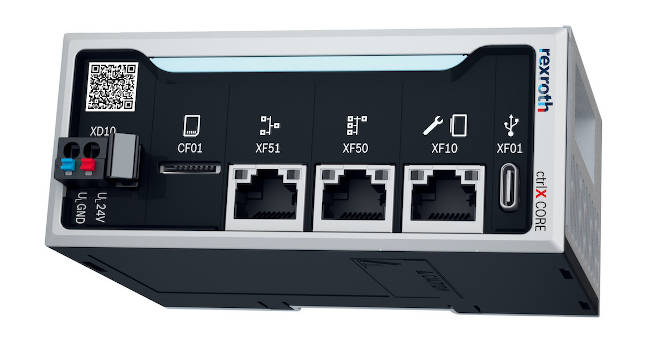There are five key traits to consider when assessing controller platforms, according to a company with a Control Engineering Engineers’ Choice Award product.

Learning Objectives
- Understand how openness is among key traits of new machine controllers.
- Examine the five key traits to consider when assessing controller platforms.
- See how downloadable apps expand automation controller flexibility.
The programmable logic controller (PLC), or automation controller, has been the most critical “smart” device driving advancements in automation efficiency, productivity and flexibility. They have evolved through several generations, leveraging developments in processor power, software sophistication and high-speed communications architecture protocols to transform automation.
A new generation of modern machine controllers is revolutionizing the industry, providing technology that offers groundbreaking openness and ease of use, while still supporting the complex functionality that current and future automation systems demand.
Openness: key traits of new machine controllers
The broader information technology (IT) world has an open software architecture, with smartphones and their app-based functionality being a classic example. In contrast, controller technology has continued to be much more closed, thereby limiting the ability of automation original equipment manufacturers (OEMs) to have long-term flexibility and control of their systems.
However, a new wave of machine controllers is overcoming these limitations and freeing the automation community.
Five key traits to consider when assessing controller platforms
Here are five key traits to consider when assessing different platforms.
1. Apps-based architecture: One of the most significant differences between past and present machine controller platforms is how open and app-based the most advanced of them have become. In modern machine controllers, the open software architecture with flexible app technology lets OEMs select the apps that they need or use any open-source software.
They can use software they developed themselves on the open platform and use their expert automation and controls knowledge to create machine-specific apps in whatever programming language fits their needs.
2. Hardware: Leading controller providers are launching Linux-based multicore processors with the speed and sophistication to support the most demanding requirements.
Multicore processors provide a critical advantage in the app-driven architecture: controllers are now being asked to do a much wider range of functions simultaneous to the core automation, I/O and motion sequence control of the machine.
With a multicore processor, one core can be dedicated just to machine control while another core supports leading-edge apps like machine learning or database maintenance. Linux-based operating systems offer a proven, open-source platform that has millions of developers updating and enhancing its capabilities.

3. Connectivity: The newest controllers are rapidly promoting support for the EtherCAT® protocol, which is being adopted as a de facto standard bus in demanding industries such as semiconductor fabrication. EtherCAT also has the advantage of being more motion-centric, a valuable asset for automation applications.
4. Openness is still key: Controller lines that also support other popular protocols such as Sercos, EtherNet/IP or Profinet offer much greater flexibility. In addition, there is growing support for emerging protocols such as OPC-UA and time-sensitive networking (TSN); machine controllers equipped with this kind of open architecture can provide a valuable, future-proof solution.
5. Stable and scalable: Smart scalability is a key advantage of the new generation of open machine controllers, with base platforms that can be scaled up with additional app functionality. Instead of having dozens or hundreds of different controllers with specific functionality determined by hardware, the core architecture lets the automation OEM scale as needed.
Some controller suppliers also offer a wider range of controller options. A single control can be deployed as a standard cabinet-mounted controller as part of an industrial PC or in a distributed, drive-based controller solution.
The “new” machine controller, responding to the needs of Industry 4.0, will deliver the openness, app-driven ease of use and flexibility that will soon make it possible for automation builders to think of their PLC like a smartphone for automation instead of a component destined for obsolescence.
Dave Cameron, director of sales, Bosch Rexroth Corp. Edited by Mark T. Hoske, content manager, Control Engineering, CFE Media and Technology, [email protected].
KEYWORDS: PLC, automation controller advice, Engineers’ Choice Awards
CONSIDER THIS
How are you using automation controllers to improve operations?




